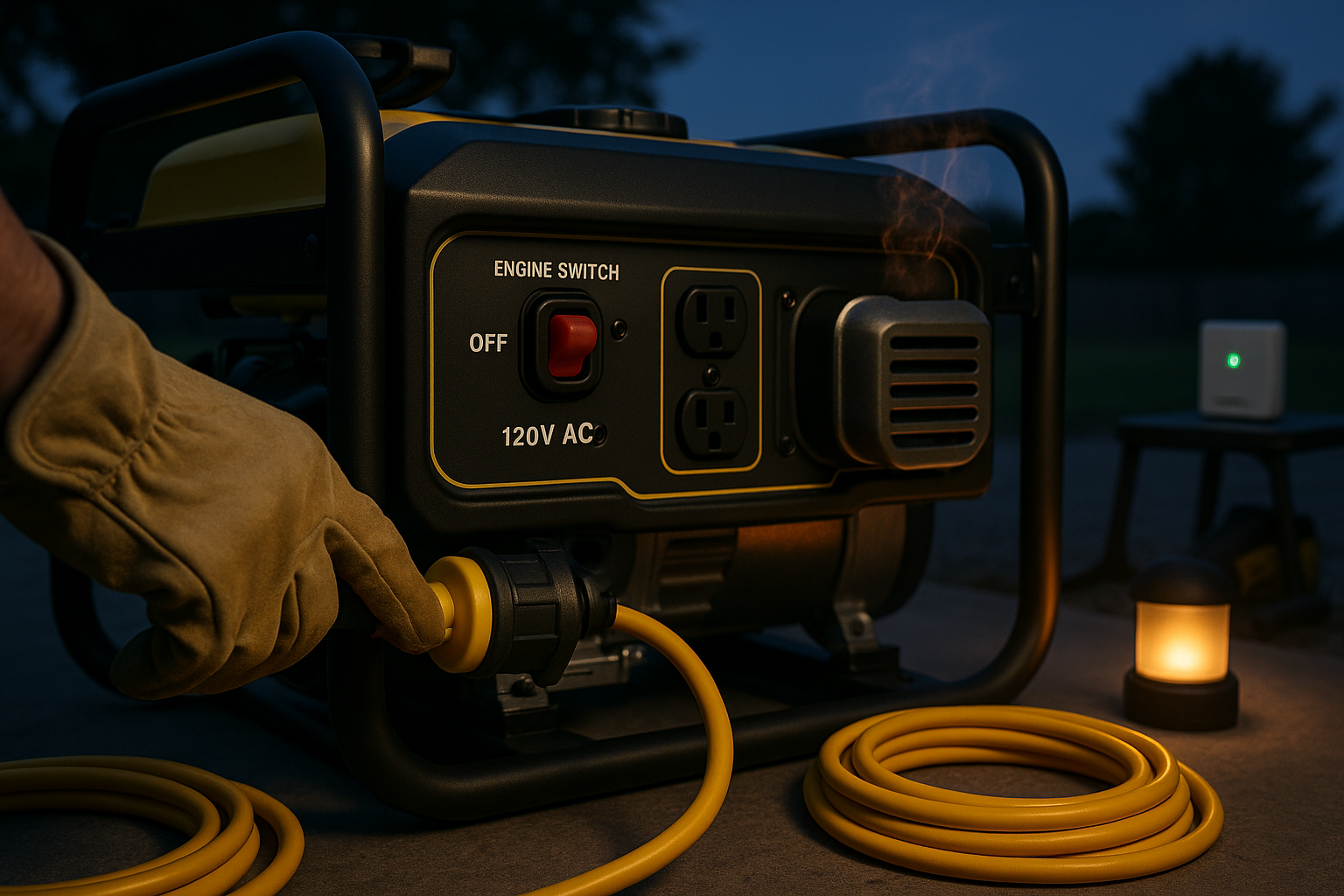How do I properly shut down my portable generator?
Your portable generator is a vital asset during power outages, camping trips, or job sites. But just as starting it correctly is crucial, knowing how to properly shut it down is equally important for safety, longevity, and reliability. Neglecting this simple procedure can lead to expensive repairs, shorten your generator’s lifespan, and even create hazardous situations. Let’s dive into why it matters and the exact steps to follow.
Why Proper Shutdown is Non-Negotiable
As a portable generator owner, understanding the shutdown process isn’t just about convenience; it’s a fundamental aspect of responsible ownership:
- Prevents Engine and Component Damage: Abruptly stopping a generator under load (with appliances running) can cause a phenomenon called “backfeeding” or create a significant voltage spike. This sudden loss of load while the engine is still spinning down can damage sensitive voltage regulators, windings in the alternator, and even strain the engine itself. Letting it cool down prevents thermal stress on internal components.
- Eliminates Carbon Monoxide (CO) Buildup Risk: While the immediate shutdown step stops the engine, allowing the generator to run briefly without load before turning it off helps ensure complete combustion cycles, minimizing unburnt fuel that can contribute to CO. Crucially, letting it cool down after shutdown in a well-ventilated area allows residual heat and any lingering fumes to dissipate safely before you approach or move it.
- Ensures Safe Handling: A hot generator poses burn risks. The cool-down period makes it safer to disconnect cords, add fuel stabilizer (if storing), and move the unit.
- Protects Connected Appliances: Turning off appliances first prevents potential power surges or irregularities from affecting your sensitive electronics and tools when the generator power ceases.
- Promotes Long-Term Reliability: Consistent, proper shutdowns reduce wear and tear, contributing significantly to your generator’s overall lifespan and dependable performance when you need it most.
Step-by-Step: The Correct Way to Shut Down Your Portable Generator
Follow these steps meticulously every single time you finish using your generator:
- Turn Off All Connected Appliances and Devices:
- This is the critical first step. Go to each appliance, tool, light, or device plugged into the generator (or connected via your transfer switch) and turn its power switch to OFF. Unplug them if practical.
- Why: This removes the electrical load before stopping the generator. Stopping under load is the primary cause of potential electrical damage.
- Turn Off the Generator Engine:
- Locate the generator’s engine ON/OFF switch or control lever.
- Move it firmly and decisively to the “OFF” position. The engine will stop running, and the generator will cease producing electricity.
- Why: This halts the engine operation and power generation. Never just pull the fuel line or choke it to stall it – use the designated OFF control.
- Let the Generator Cool Down:
- Do not touch or move the generator yet. Allow it to sit and idle (though it’s off, components remain very hot) for at least 10-15 minutes in a well-ventilated, outdoor area.
- Why: Engine components (exhaust manifold, muffler, engine block, alternator) are extremely hot after operation. This cool-down period prevents burns, allows internal temperatures to stabilize reducing thermal stress, and lets residual fumes dissipate. Never cool it down indoors or in an enclosed space.
- Disconnect All Cords:
- Once the generator is cool to the touch (carefully check the casing near the engine), unplug any extension cords or appliance cords from the generator’s outlets.
- If using a transfer switch, ensure the connection to the generator inlet is safely disconnected according to the switch’s instructions.
- Why: Ensures the generator is fully isolated and prevents accidental starting with cords attached. It also makes the generator safer and easier to move.
- Store the Generator Safely:
- Move the cooled and disconnected generator to a clean, dry, well-ventilated storage location. This should be away from living areas, fuel sources, ignition sources, and protected from the elements and dust.
- Fuel Tip (For Storage): If you won’t be using the generator for more than 30 days, consult your manual. You usually need to either run the carburetor dry (if specified) or add a fuel stabilizer to the tank and run the generator for 5-10 minutes after adding stabilizer (but before starting the shutdown process) to protect the fuel system. Never store it with untreated gasoline long-term.
Essential Tips for Safe and Efficient Generator Use
Beyond shutdown, keep these practices in mind:
- RTFM – Read The Fine Manual: Your generator’s owner’s manual is your bible. It contains model-specific startup, shutdown, maintenance, and safety procedures. Always consult it first.
- Ventilation is Paramount: Operate generators ONLY outdoors, far away from windows, doors, vents, and garages (even open ones). Carbon monoxide is invisible, odorless, and deadly. Use battery-operated CO detectors in nearby living spaces.
- Fire Safety: Keep a fully charged, Class ABC fire extinguisher readily accessible whenever the generator is running. Keep the generator area clear of dry leaves, debris, and flammable materials.
- Regular Maintenance is Key: Follow the manual’s maintenance schedule rigorously. This includes frequent oil changes (often after the first 20-50 hours, then regularly), air filter cleaning/replacement, spark plug inspection/replacement, and checking fuel lines and connections. Clean fuel and clean oil are vital for longevity.
- Use the Right Fuel: Use fresh, clean gasoline with the octane rating specified in your manual. Avoid ethanol blends (E10 is often tolerated, E15 or higher is bad) if possible, or use a fuel stabilizer designed for ethanol.
Shutdown Smart for Safety and Savings
Taking a few extra minutes to properly shut down your portable generator isn’t just a suggestion; it’s an essential practice. By diligently following the steps – unloading, turning off, cooling down, disconnecting, and storing safely – you protect your investment from costly damage, ensure its readiness for the next emergency or adventure, and most importantly, safeguard yourself and others from the dangers of carbon monoxide and fire. Combine this with regular maintenance and safe operation practices, and your Power Hornet (or any brand) generator will deliver reliable power for years to come. Remember: When in doubt, always refer to your specific owner’s manual.

